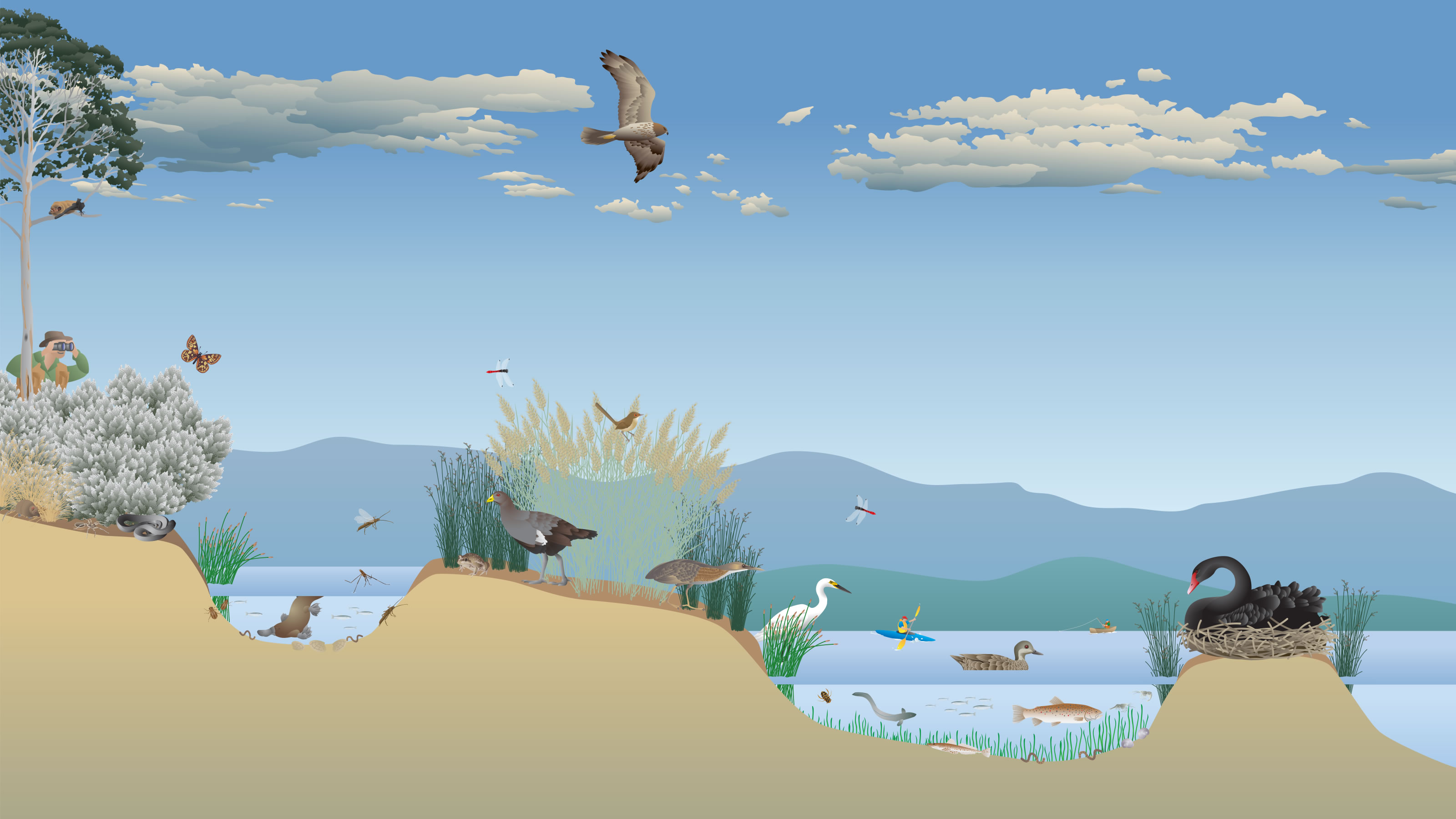Wetlands also act as natural sponges, absorbing and stilling flood waters and filtering out sediments, nutrients and other pollutants.

- Macrophytes
- Dragonfly
- Stonefly
- Shrimp
- Freshwater snail
- Freshwater mussel
- Aquatic earthworm
- Whitebait
- Short-finned Eel
- Pacific Black Duck
- Black Swan
- Platypus
- Freshwater Flathead
- Trout
- Sea Rush
- Common reed
- Common spike-rush
- Water strider
- Water boatman
- Eastern banjo frog
- Tasmanian native hen
- Great egret
- Australasian Bittern
- Reed warbler
- Swamp harrier
- Tea tree
- Butterfly
- Wolf spider
- Swamp antechinus
- Tiger snake
- Bat
- Swamp gum
Click or tap on a species to learn more.
A century ago, wetlands were found in most of the bays and coves up and down the Derwent. Most of these wetlands were filled in over time, to make way for buildings, factories, parks and even tips. Today, only a few of these wetlands remain – for example at Goulds Lagoon and Risdon Cove. The Habitat Atlas indicates that there are 1.3 km² of tidal wetlands remaining in the Derwent Estuary, particularly in the area between Bridgewater and New Norfolk, where large areas of marshes, reed beds and tidal flats can still be seen.
Did you know?
- Many of the sporting fields along the Derwent foreshore were once wetlands, including at Cornelian Bay, Geilston Bay and Wentworth Park.
Things to explore
- Visit a wetland as part of a school trip, for example at Goulds Lagoon, Risdon Cove, or the man-made Kingston stormwater treatment wetland.
Community types
Plants and animal species of tidal wetlands and macrophytes beds occur in a range of different community types, largely distinguished by the vegetation types.
Key threats
Wetlands are among the world’s most productive environments yet their loss and degradation is a major global problem. A century ago, wetlands were found in most of the bays and coves up and down the Derwent. Most of these wetlands were filled in over time, to make way for buildings, factories, parks and even tips. Today, only a few of these wetlands remain – for example at Goulds Lagoon and Risdon Cove. The Habitat Atlas indicates that there are 1.3 km² of tidal wetlands remaining in the Derwent Estuary, particularly in the area between Bridgewater and New Norfolk, where large areas of marshes, reed beds and tidal flats can still be seen.
There are many threats to tidal and lagoon wetlands of the Derwent Estuary, which are common to most wetlands. These include:
- direct damage or loss from land clearing and urban development
- introduction and spread of weeds and pests
- alterations to natural water patterns and flows (due to water extraction, barriers, and changing weather patterns)
- local sources of pollution and pollution within the greater catchment (upstream)
- altered fire regimes.
Macrophytes beds have also been considerably influenced by human actions. Major impacts include:
- impaired hydrology due to reduced river flow rates
- altered nutrients
- altered sediment budgets
- dredging
- anchor drag.
While a range of legal, policy and other mechanisms are in place to deal with these threats, there is a need for a special focus on the management needs of wetlands and macrophytes beds.
Educational resources
To further explore this habitat and others, check out our educational resources.
